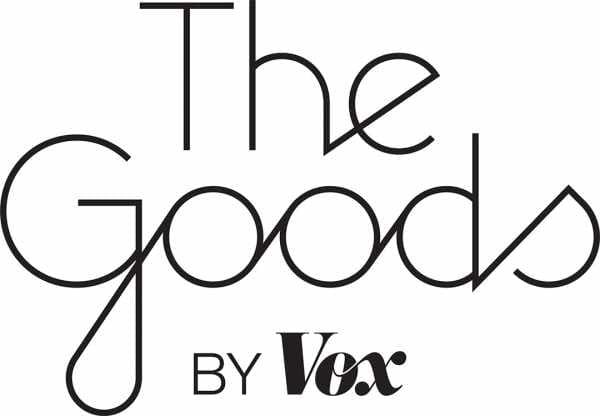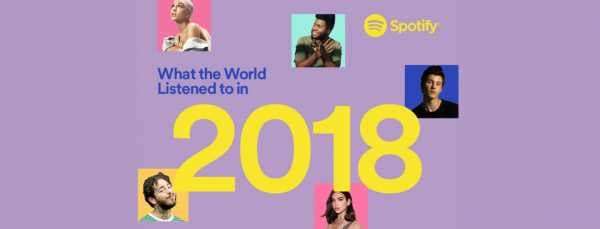

The most-streamed artists on Spotify this year were Drake, Post Malone, XXXTentacion, J Balvin, and Ed Sheeran, and the top songs were Drake’s “God’s Plan,” XXXTentacion’s “SAD!,” Post Malone’s “Rockstar,” and Post Malone’s “Psycho,” followed by Drake’s “In My Feelings.”
“>Narrowed down to the US, things were different but the same: Drake, Post Malone, XXXTenatacion, Travis Scott, and Khalid at the top. “Nice for What” instead of “In My Feelings.” An honorable mention for Juice WRLD, part of the primarily American burgeoning genre of rap music infused with the regurgitated influences of early-aughts emo, in particular its throughline of misogyny. (His breakout hit was “All Girls Are the Same.”)
Top female artists were also included in the platform’s year-end data haul, in a separate list.
Elsewhere in the rankings, women hardly existed: Cardi B’s Invasion of Privacy was No. 4 on the US’s top albums list, though it didn’t appear in the global top five and she didn’t have a top song. Dua Lipa was the only female artist with an album in the global top five, but she didn’t have a top song either.
Top female artists were also included in the platform’s year-end data haul, in a separate list
This is, as Spotify put it on the company blog, “how 191 million people around the world streamed music and content in 2018.”
No big surprise there, as the exact same thing happened last year. In 2016, Rihanna was the only woman at the top of the list. In 2015, it was also all men. These results are even stranger given the number of women — Adele, Taylor Swift, Rihanna, Beyoncé, and Pink, to name a few — who pulled off blockbuster albums with millions of sales, in a time when a platinum album is supposedly impossible.
Looking at the past several years of the charts, this polarization looks like more than garden-variety cultural sexism — it looks like something new that our algorithm-based platforms have wrought. The biggest question facing Spotify in the coming year should be whether it can do something about it.

Music writer Liz Pelly — journalism’s most diligent critic of the outsize influence Spotify is currently wielding in popular culture — conducted a micro-study on Spotify’s algorithmic sexism for the Baffler earlier this year. “Is streaming culture merely reflective of a relentlessly male-centric status quo, or is it shifting us back toward a more homogenous and overtly masculine pop music culture?” she asked, pointing out that 2017 was the first year since 1984 that the Billboard year-end top 10 had been exclusively male artists.
For her experiment, she created a brand new Spotify account, so that all results would be from a clean slate — pure algorithm, to confirm “that when a user listens to mostly male-dominated playlists, what is produced are yet more male-dominated playlists.” She listened to nothing but Spotify’s featured playlists and their subsequent recommendations for a month; then she downloaded spreadsheets of the data and found that she was right.
Today’s Top Hits is the most-followed playlist on Spotify, with more than 22 million followers — 3 million more than when Pelly published her piece less than six months ago. Pelly found that 85.5 percent of the songs that appeared on it all month included men, and 45.5 percent included women.
Similarly:
- On New Music Friday: 82.4 percent of songs included men, 37.2 percent included women.
- On Rap Caviar: “The only woman-led track present was Cardi B’s ‘Bartier Cardi (feat. 21 Savage).’ This means that every week, for four consecutive weeks, and on a fifty-track playlist, only one song led by a woman artist appeared.”
- On Rock This: 86 percent of songs per by all-male bands, 9 percent were by women-led bands, and 5 percent were by bands with “women involvement.”
- On ¡Viva Latino!: 73 percent men, 24 percent women, the best numbers Pelly saw.
- On Discover Weekly — the personalized recommendation section of Spotify’s app, which helps users find new songs according to their pre-established taste — Pelly found that only 23.3 percent of the songs were led by or featured a female artist. Again, given the terms of the experiment, the “taste” here was purely that of the Spotify algorithm.
Placement on these playlists leads a song to be added to more user-made playlists, to be suggested by the algorithm to other users who like other songs on those other playlists, and to entrench certain artists into the basic fabric of all listening through the service. The algorithms even prioritize songs that people finish over songs that they listen to part of or skip, so it stands to reason that passive playlist listening is boosting artists users might not even actually actively care about. Like Ed Sheeran.
It’s possible for an artist to break through to the top without paying — as Drake did this spring — to take over the top spots on every featured playlist on the entire platform for several days. XXXTentacion and Post Malone are both success stories born from SoundCloud and then Rap Caviar placement; J Balvin has been wildly popular in Colombia for years but made his global pop chart crossover on “I Like It,” alongside the internet’s Cinderella, Cardi B. (Odd, then, that she doesn’t appear in the top five herself!)
So perhaps what’s most alarming about this year’s top artists is that it shows the algorithm, while of course always accountable to the one-man mega-corporation that is Drake and the anthropomorphized Hallmark card that is Ed Sheeran, is also capable of bending to accommodate new voices — but only a certain kind.
The power of male voices on Spotify is such that XXXTentacion appears in the top artists, songs, and albums column, despite his music being removed from promoted playlists during the company’s brief experiment with a “Hateful Content and Conduct Policy,” which targeted XXXTentacion because — prior to his death in June — he was accused of several violent crimes, including beating and strangling his pregnant girlfriend, as well as imprisoning her in his home. (After his death, Pitchfork published a recording of him confessing to the crimes.)
Spotify walked back the policy, but it might not even have mattered if it hadn’t. Anecdotally, the Spotify algorithm suggests I add him to one of my playlists approximately once per day. “SAD!” has been streamed nearly 1 billion times, which means I have to actively fight to not hear it, taking care never to let a rap playlist or similar artist’s album hit the end and draw on the algorithm to pull my next track for me.
Spotify is not unaware that it has a problem. In March, it highlighted the disparities in the 2017 numbers and launched the Smirnoff Equalizer — a website sponsored by Smirnoff that would tell you what percentage of your streams were going to female artists, and would then suggest female artists you might like. The press release for the project included other interesting information as well, like, “If you’d like to toast to the phenomenal women in your life, mix up the Original Moscow Mule, which was invented by Smirnoff in 1941. Combine 1.5 oz. Smirnoff No. 21 vodka, 4 oz. ginger beer and a squeeze of lime in a copper mug over ice.”
The algorithm is capable of bending to accommodate new voices — but only a certain kind
The website was glitchy, and the playlist recommendations were almost offensively obvious — have you heard of Aretha Franklin? What about Joni Mitchell? — and when Pelly used it, she was told she had been listening to nearly 100 percent male artists.
“I had merely been listening to what Spotify told me to listen to,” she pointed out.
To its credit, Spotify at least acknowledges the problem quite often. It launched a different project, also called “Equalizer,” in partnership with Swedish pop kingpin Max Martin in summer 2017, centered on networking dinners and seminars about women in the music business. This March, it created a new playlist hub called “Amplify,” to promote music somehow related to social causes, and started with “women of the world” for Women’s History Month. In November, it launched “EQL Directory,” a global database of women who work in music production, and emphasized that less than 5 percent of currently working audio engineers are women.
But so far, it has been unwilling or unable to fix the more basic issues of its own platform. (Not that Spotify is alone there. Amazon and Google have both been called out for sexist AI this year, and it’s hardly a new phenomenon.)
2019 seems like as good a year as any to try to figure that out, no?
Until then, Spotify’s annual “Wrapped” feature, which summarizes the tracks and genres individual users spent the most time listening to this year, is live today. Go ahead and see how much of the problem is you!
Want more stories from The Goods by Vox? Sign up for our newsletter here.
Sourse: vox.com






